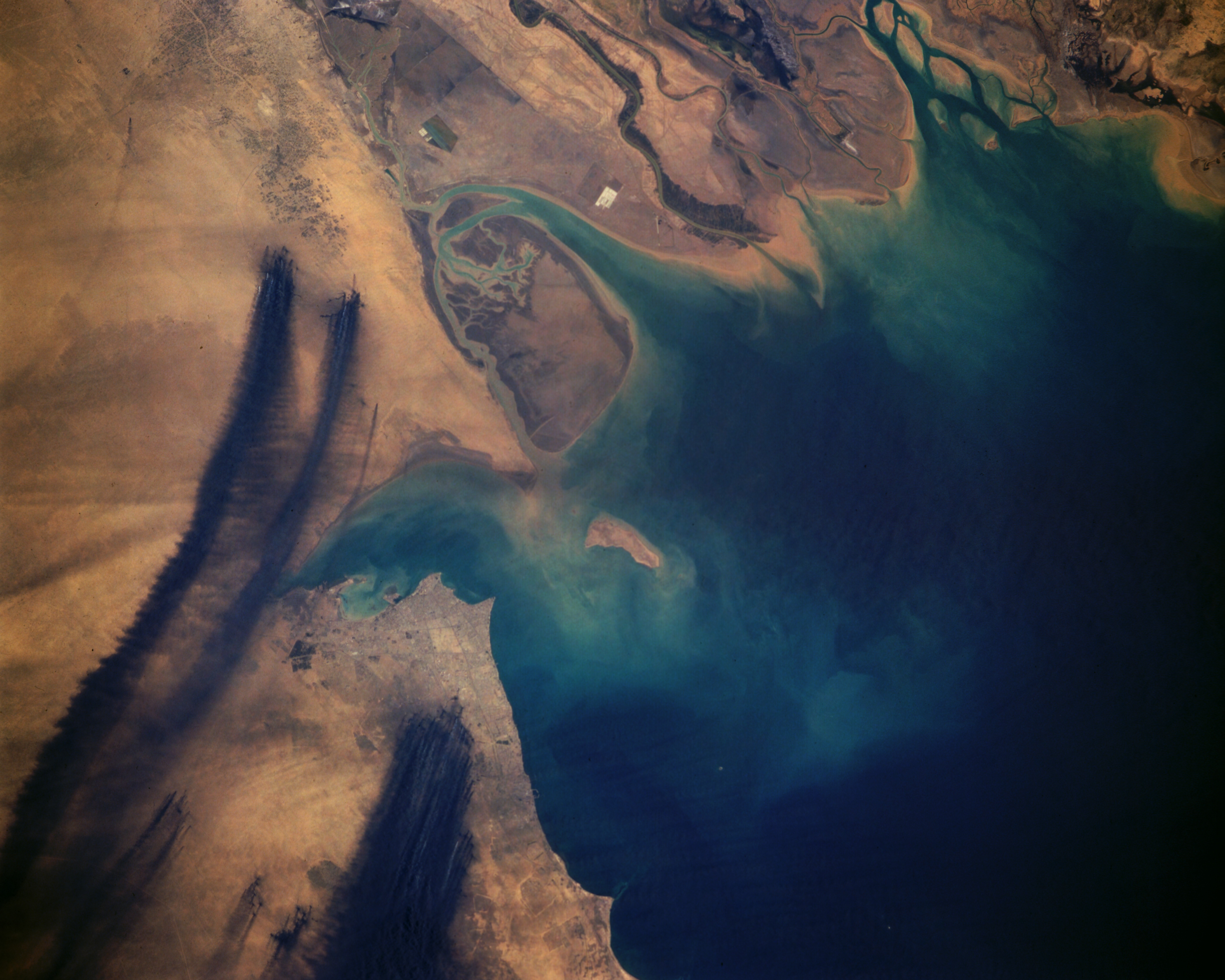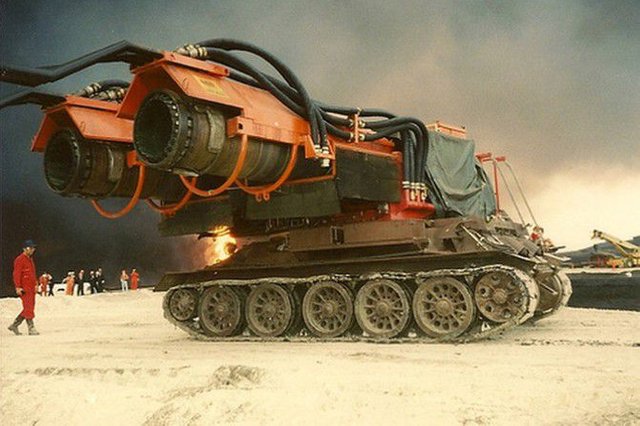Towards the end of the Gulf War in 1991, retreating Iraqi forces, under their scorched earth policy, started destroying Kuwait’s oil wells by setting them on fire, more than 700 in total.
If not for the immense help provided by a very peculiar firefighter comprising the Russian T-34 tanks and the engines of MiG-21 aircraft, Kuwait might have continued to burn for years to come.
Kuwaiti Oil Fires
In February 1991, after having plundered Kuwait City, the bolting Iraqi Army sets off explosives at the heads of more than 700 Kuwaiti oil wells. The smoldering oil geysers sent brilliant yellow flames close to 100 meters into the air.

Every day for over 7 months, these fires unbridled thousands of tons of thick black smoke into the bleak desert landscape, casting a 1,200 kilometer-long ebony plume over it.
The oil, collected around 100 million years ago, in pools lying more than 1,200 meters beneath the earth’s surface, roared up in flames with monstrous force. The fires reach temperatures of over 1000 degrees Celcius.
Close to five to six million barrels a day (about 250 million gallons of oil) were getting wasted every day. Some of the oil surged upward with great force, not igniting but forming huge black lakes.
There were close to 240 such lakes, containing 20 million barrels worth of oil. Every single one of these was capable of catching fire upon contact with some explosive. Moreover, close to 20,000 unexploded cluster bombs and mines were lying in the region.

At that point, there was enough oil in those wells to sustain the flames and smoke for 43 years! After all, Kuwait then had 94-billion barrels of underground reserve of this black gold. The flaming oil wells weren’t just an economic disaster, they were significantly damaging the environment as well.
Those fires could have changed the global climate, potentially causing temperatures across the northern hemisphere to dip.
When The ‘Big Wind’ Came
This is where the ‘Big Wind’ or ‘Windy’ came to the rescue. It was a peculiar firefighting tank that had precedence in a Soviet innovation.
The Soviets had mounted engines of MiG-15s on trucks to clear snow from airfields and even blow out oil-well fires.
A Hungarian company saw the merit of this vehicle to put out fires in Kuwait. It created the Big Wind by using the reliable chassis of a T-34 tank as a base.
The original turret of the tank was replaced by a platform that bore a pair of MiG-21 jet engines. Each engine was 10 feet long. At the back of the platform, Windy had a small control cabin with just enough space for one operator. This fire truck moved at a slow pace of 4.8 km/h and only had the forward gear.

Six water nozzles, that stuck out like a giant fork, were fitted above the MiG engines. To feed water to the tank, a fire hose drew water from a reservoir not far away from the blazing wells. Hundreds of these reservoirs had to be dug to fight all the fires.
The jet engines on the tank seemed like guns ready to fire jet blasts. However, the engineers at the Hungarian company had employed pipes to drop water above the jet exhausts. Consequently, water was shot at a fire at a speed of around 1.239 kilometers per hour.
How Does It Work?
The concept used to put out the fire is quite simple: the jet sprays break off the flame from the blaze. Oil well fires only find enough oxygen to support burning at a good height.
As the fire burns, the streaming oil takes its place. This is the primary reason behind oil well fires looking like a torch. Jet sprays can stop this seemingly unending cycle instantly. Then, the water stream is used to cool the area, preventing reignition.
Big Wind was designed to approach a blazing wellhead while its crew was protected from the flames by the tank’s armor. The jets would then launch a stream of water and fire suppressant chemicals.
Footage from 1991 shows how this innovative, hybrid machine put out these vast fires in seconds. A team could then run in and seal the wellhead before the firefighters moved on.
The last of the Kuwaiti fires were put out in November 1991. A huge disaster that could have lasted decades, was cut short in its path. Meanwhile, the Big Wind stills soldiers on, putting out oil fires and clearing runways around the world.
- Written by Shreya Mundhra/EurAsian Times Desk
- Follow EurAsian Times on Google News




